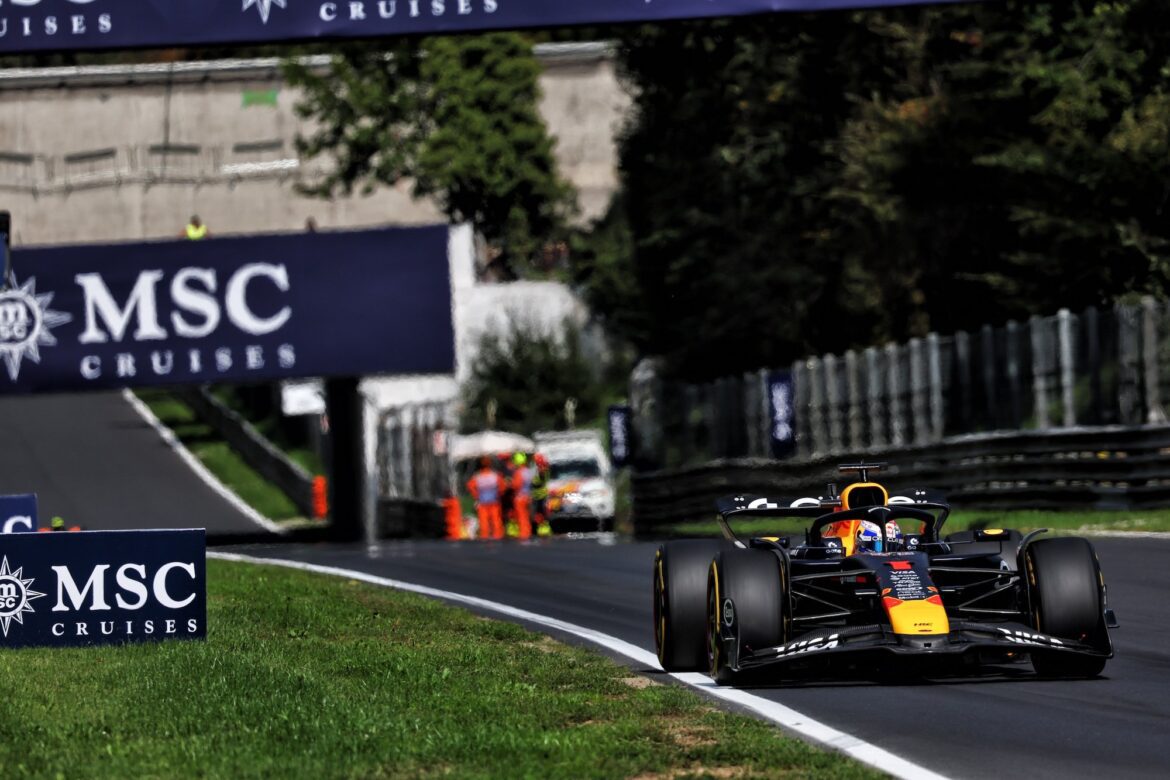Red Bull Racing’s Strategic Revival: A Deep Dive into the RB21 Transformation
In the high-octane world of Formula 1, teams are constantly evolving their strategies and technologies to maintain a competitive edge. The start of the 2025 season posed significant challenges for Red Bull Racing, particularly for their star driver, Max Verstappen. However, a noteworthy transformation of the RB21 has revitalized the team’s performance, culminating in an impressive victory at the Italian Grand Prix in Monza. This article explores the intricate changes made to the RB21, the mindset of the Red Bull Racing team, and the implications of their recent success.
The Challenge of the 2025 Season
Every new season in Formula 1 brings its own set of challenges. For Red Bull Racing, the early part of the 2025 season was particularly tough. The team struggled to find the right balance and performance levels, which led to questioning their approach and strategies. Laurent Mekies, the team principal, emphasized that such moments are part of the competitive landscape of F1. When results do not align with expectations, it is natural to re-evaluate every aspect of the vehicle and the team’s operations.
Mekies noted that the team’s philosophy is rooted in maintaining an open mindset to address challenges constructively. This approach is crucial in a sport where milliseconds can determine race outcomes. The collective effort of the team to remain focused and committed to improvement has paved the way for significant advancements in the RB21.
Key Enhancements to the RB21
The turning point for Red Bull Racing came with the introduction of a new floor design for the RB21. This enhancement proved to be a game-changer, providing the car with improved aerodynamic grip and balance. Pierre Waché, the team’s technical director, highlighted that the new floor exceeded performance expectations, enabling Verstappen to secure victory with a remarkable 19-second lead over his closest competitor, Lando Norris.
This significant margin not only underscores the effectiveness of the new component but also marks it as the largest victory margin of the season thus far. The performance boosts from the upgraded floor illustrate how critical design elements can influence race outcomes in Formula 1.
The Italian Grand Prix: A Showcase of Dominance
During the Italian Grand Prix at Monza, Verstappen was the sole driver utilizing the new floor design, while his teammate Yuki Tsunoda was still relying on the previous version, which unfortunately sustained damage during the race. The stark difference in performance between the two drivers highlighted the advantages of the new technology Red Bull Racing had implemented.
The Monza circuit, known for its high-speed straights and challenging corners, demanded a car that could capitalize on aerodynamic efficiency. The strategic decision to introduce the new floor at this venue proved to be a masterstroke, allowing Verstappen to navigate the track with unprecedented speed and control.
Looking Ahead: Future Races and Improvements
As the season progresses, the anticipation surrounding Tsunoda’s transition to the new floor design grows. With the next race scheduled in Azerbaijan, the team is optimistic about implementing the upgraded component. The Baku circuit, characterized by its long straights and the need for low downforce setups, presents an ideal opportunity to exploit the advantages offered by the new floor.
Mekies conveyed the sentiment that the success at Monza is not merely a standalone event but rather a testament to the hard work and perseverance shown by the entire team in Milton Keynes. The collective dedication to overcoming earlier setbacks has reinvigorated the team’s confidence and credibility in the competitive arena of Formula 1.
The Importance of Team Effort
The victory at Monza serves as a reminder of the essential role that teamwork plays in achieving success in Formula 1. Each member of the Red Bull Racing crew, from engineers to pit crew, has contributed to the ongoing evolution of the RB21. Mekies expressed his pride in the team’s determination, stating that their refusal to give up has been instrumental in their recent turnaround.
In a sport where technology and human performance intersect, the synergy between engineering innovations and driver skill is paramount. Verstappen’s exceptional talent as a driver is complemented by the advancements made to the vehicle, showcasing the importance of collaboration in achieving victory.
The Psychological Aspect of Racing
The mental aspect of racing cannot be overlooked. After a rocky start to the season, the pressure on Red Bull Racing to deliver results was immense. The ability to maintain focus and resilience in the face of adversity is a testament to the psychological fortitude of both the team and the drivers. Mekies noted that overcoming these challenges requires a strong mindset and the capacity to learn from difficulties.
This psychological resilience is a key factor that distinguishes successful teams in Formula 1. The ability to pivot, adapt, and innovate in response to setbacks can significantly impact a team’s trajectory throughout the season.
Conclusion
The journey of Red Bull Racing through the initial challenges of the 2025 season to their triumphant performance at Monza illustrates the dynamic nature of Formula 1. The strategic overhaul of the RB21, particularly with the introduction of the new floor design, has revitalized the team’s competitiveness. As they look forward to the upcoming races, the focus remains on continuous improvement, teamwork, and the relentless pursuit of excellence that defines the ethos of Red Bull Racing. With the right combination of technology, talent, and tenacity, the team is poised for further successes as the season unfolds.
